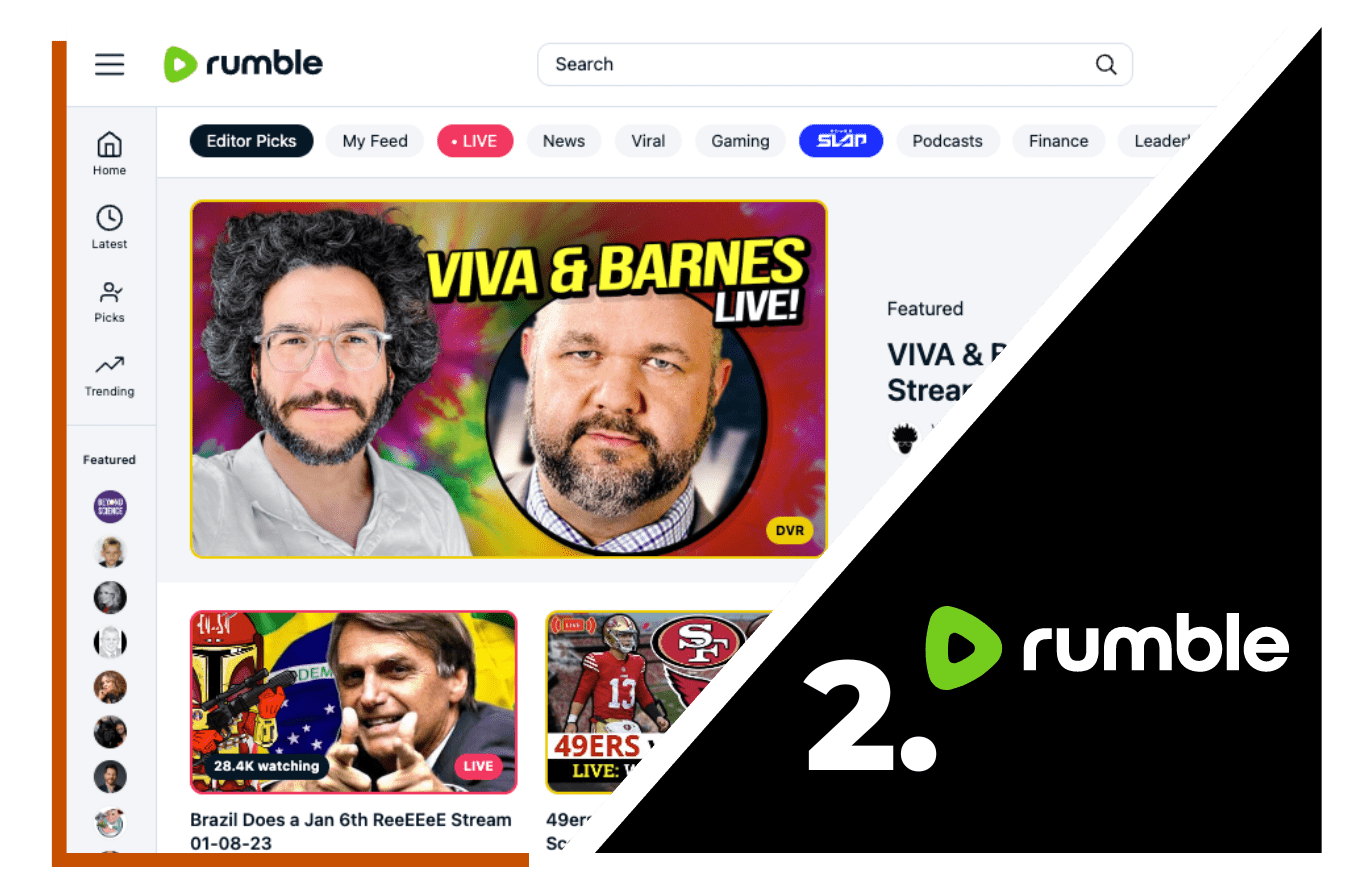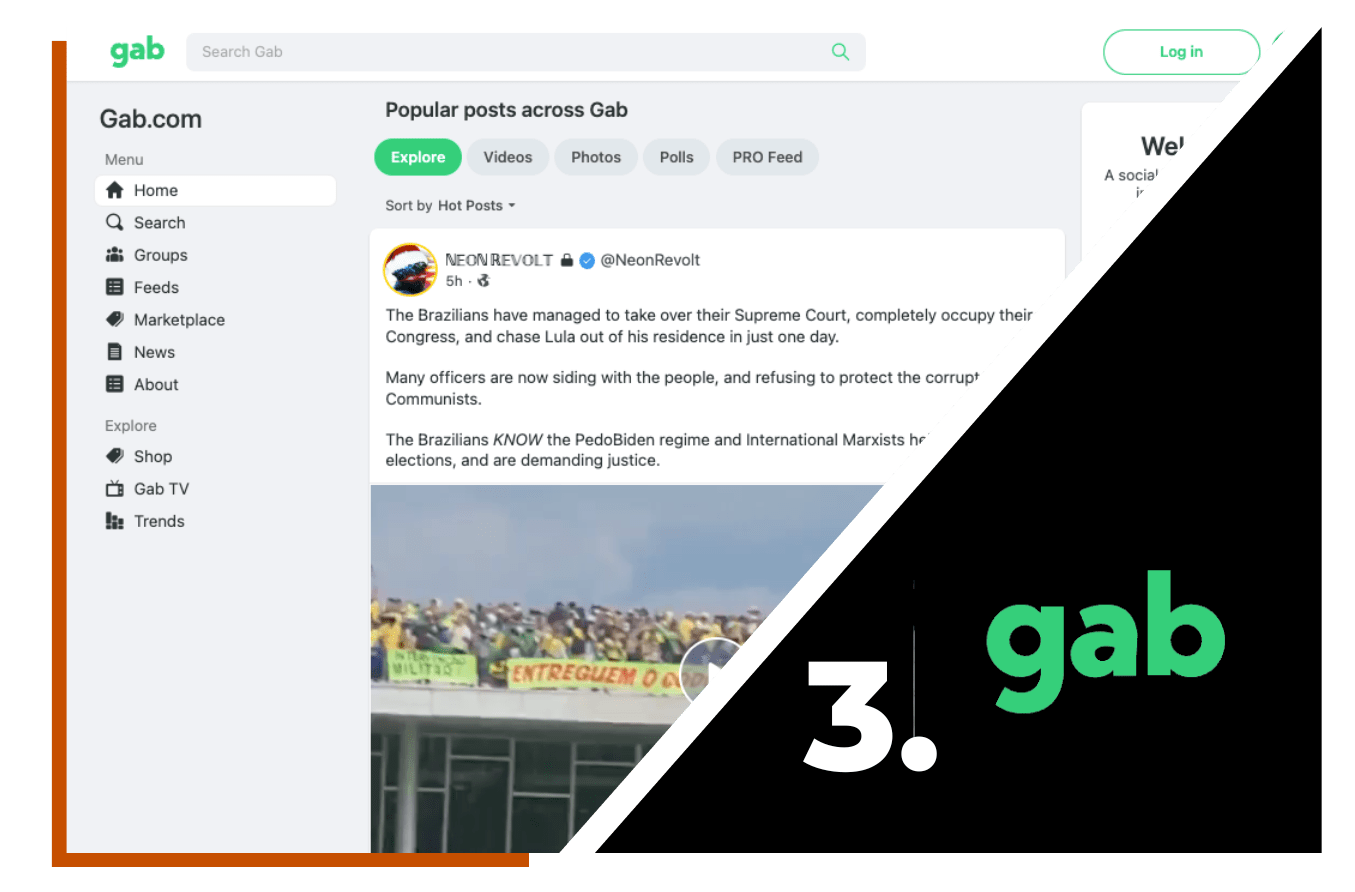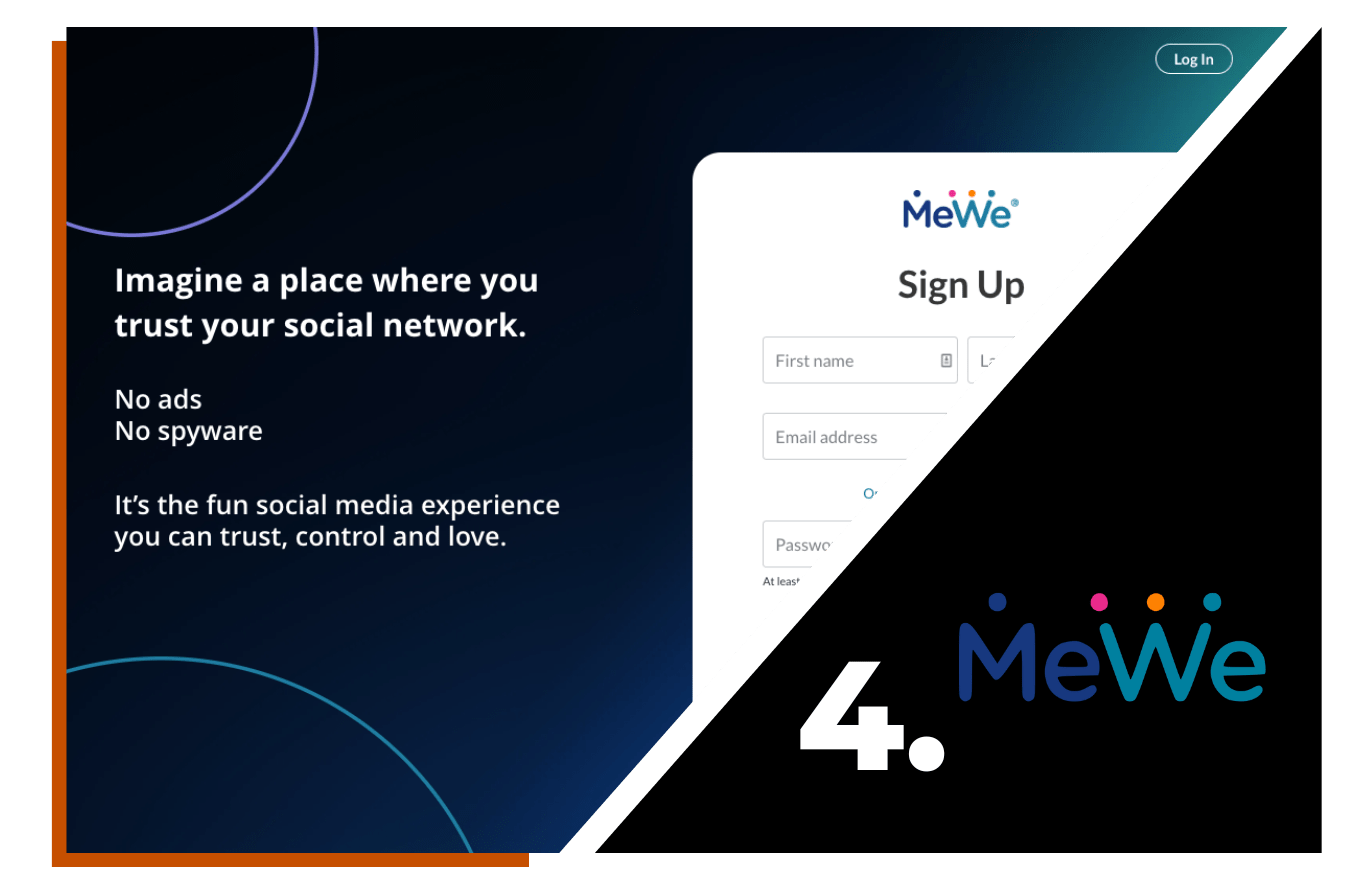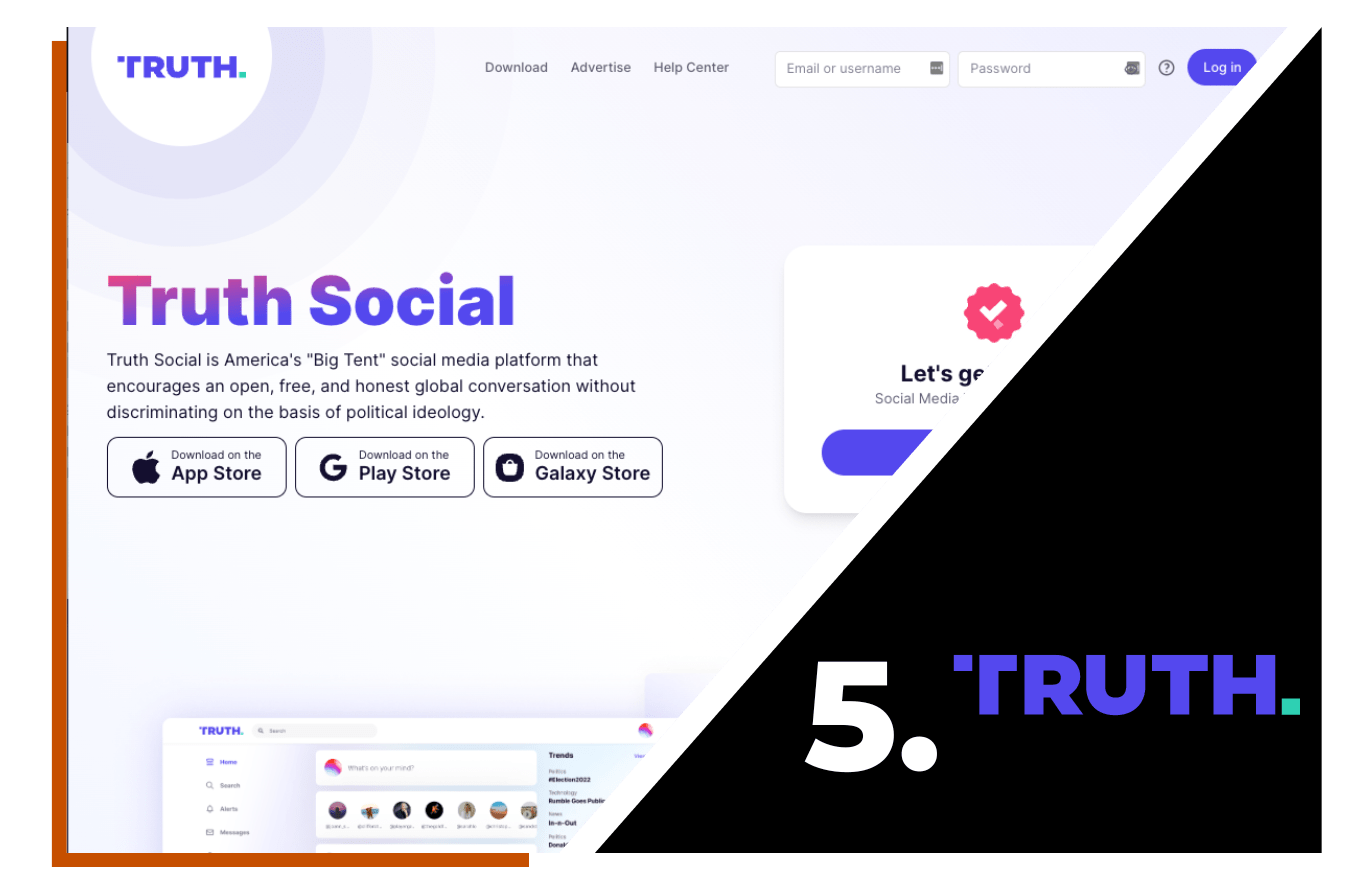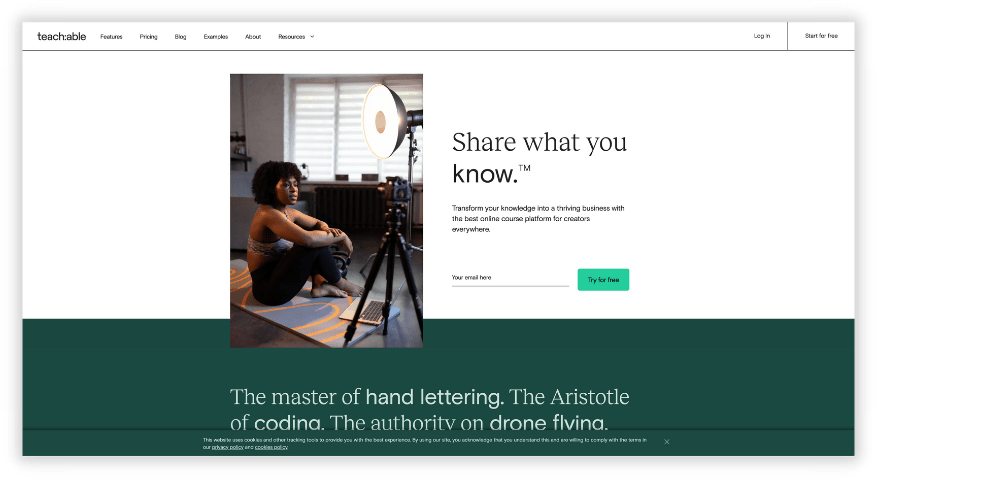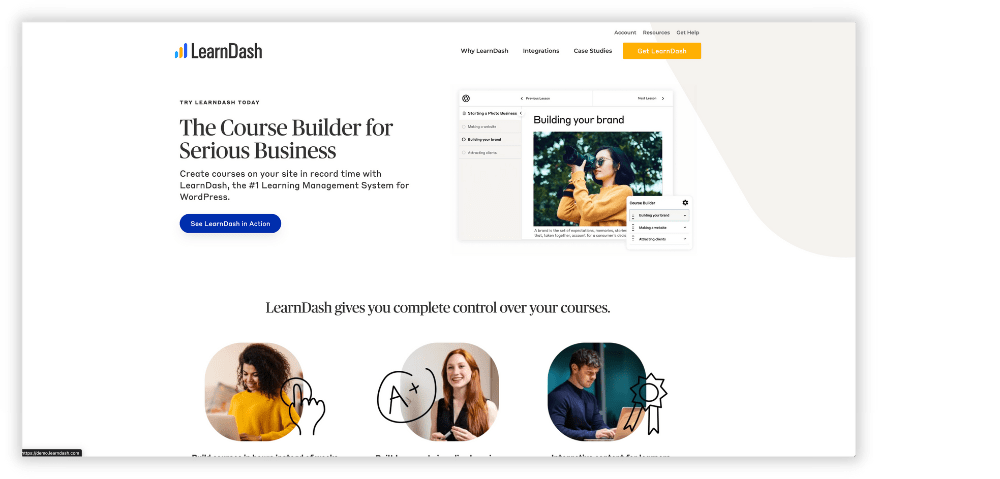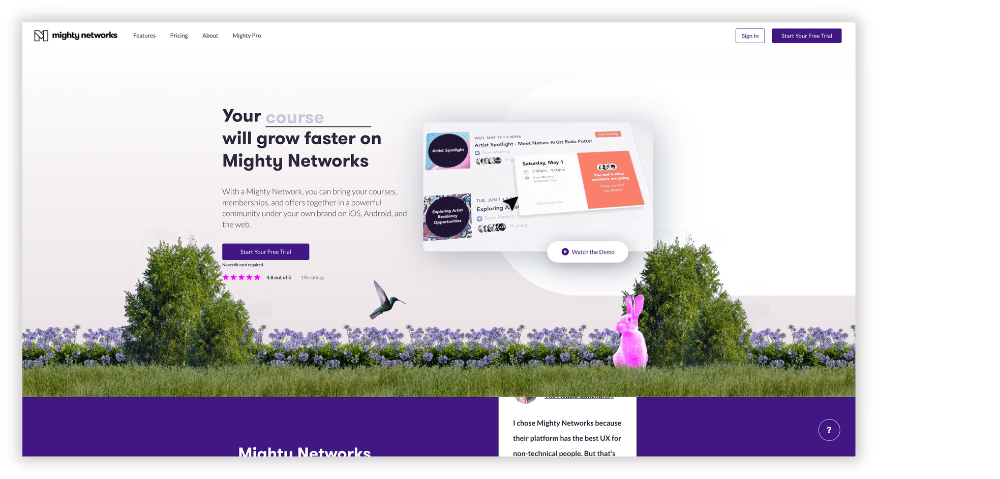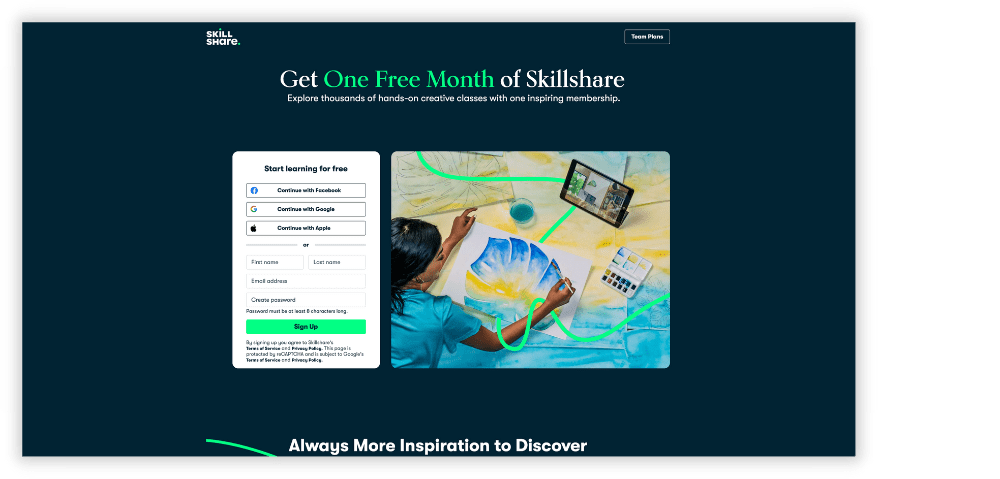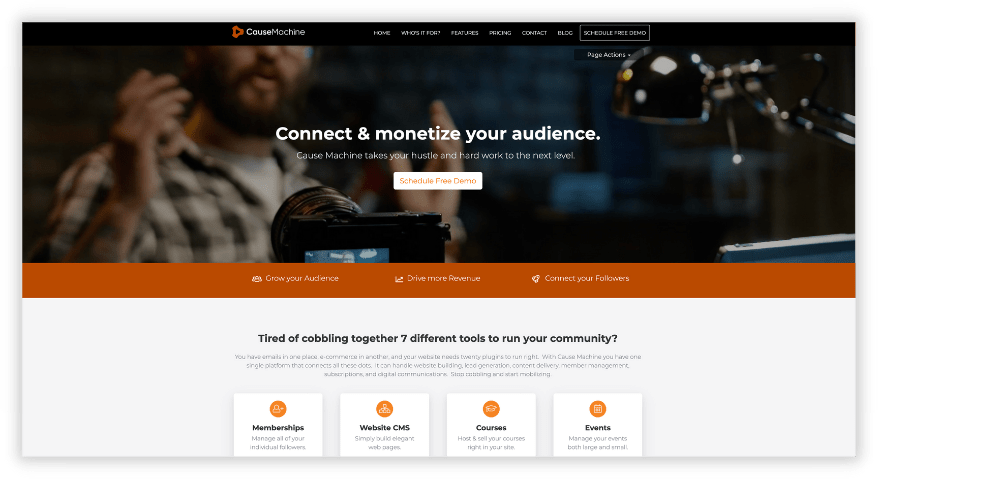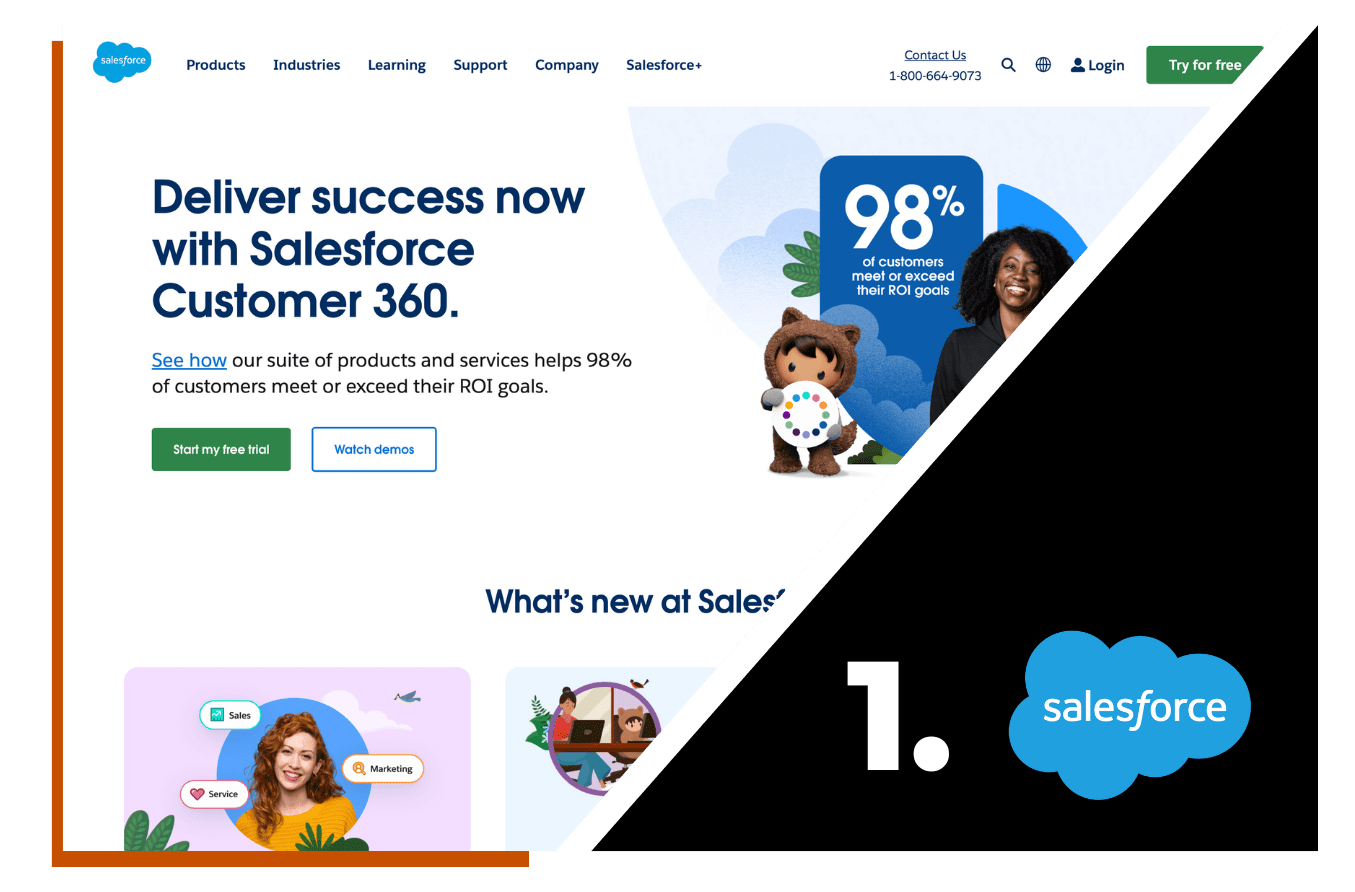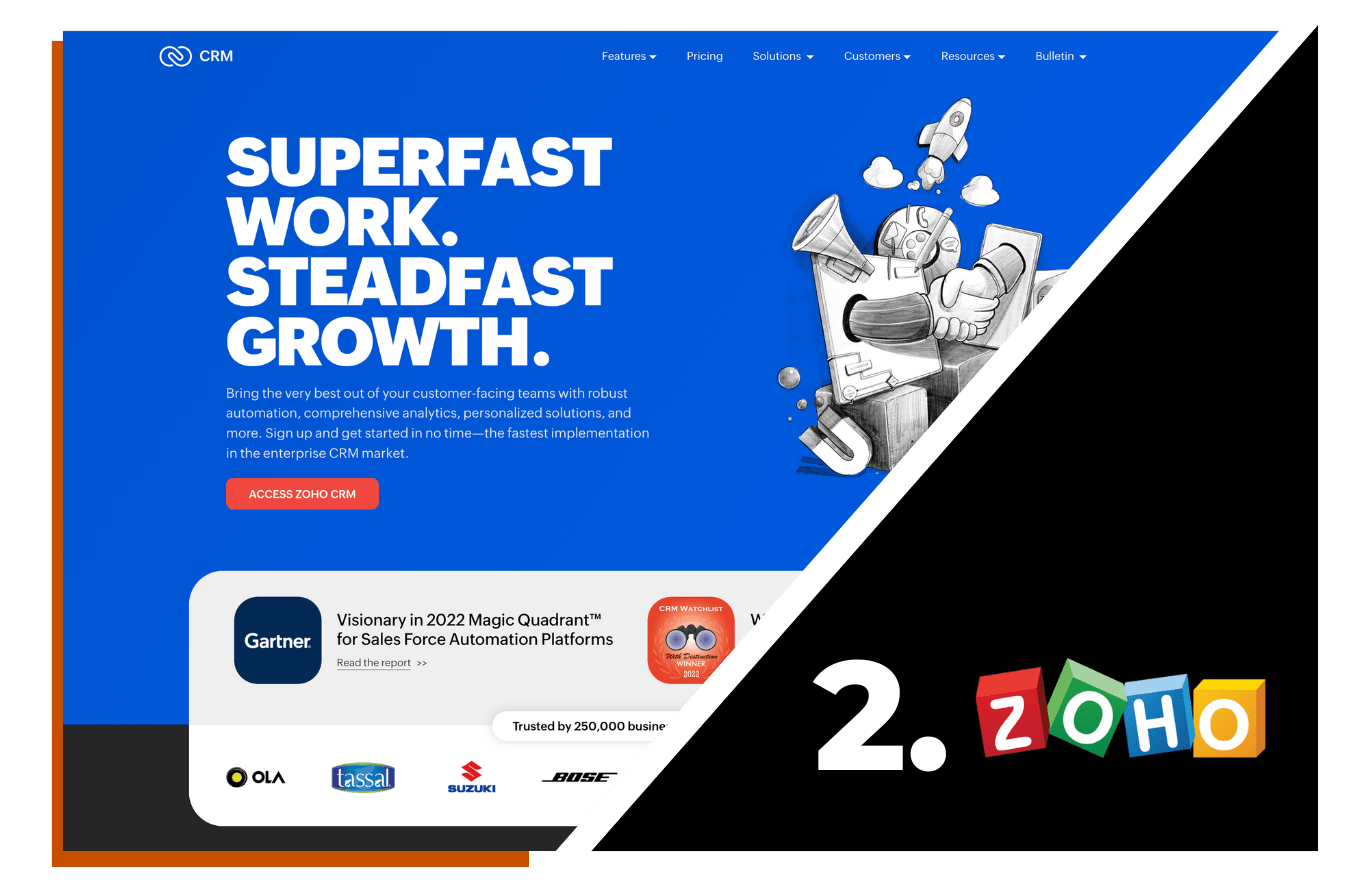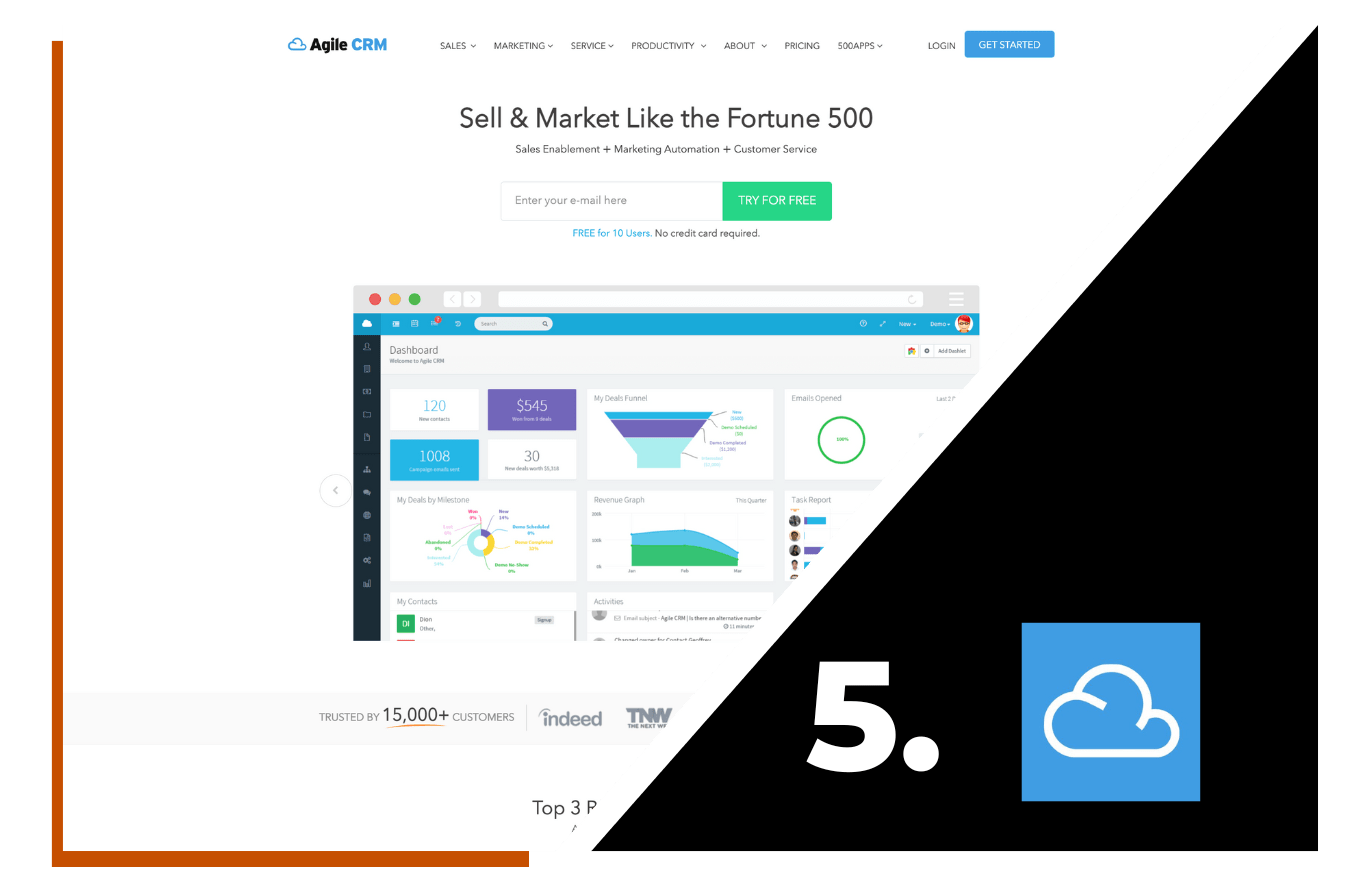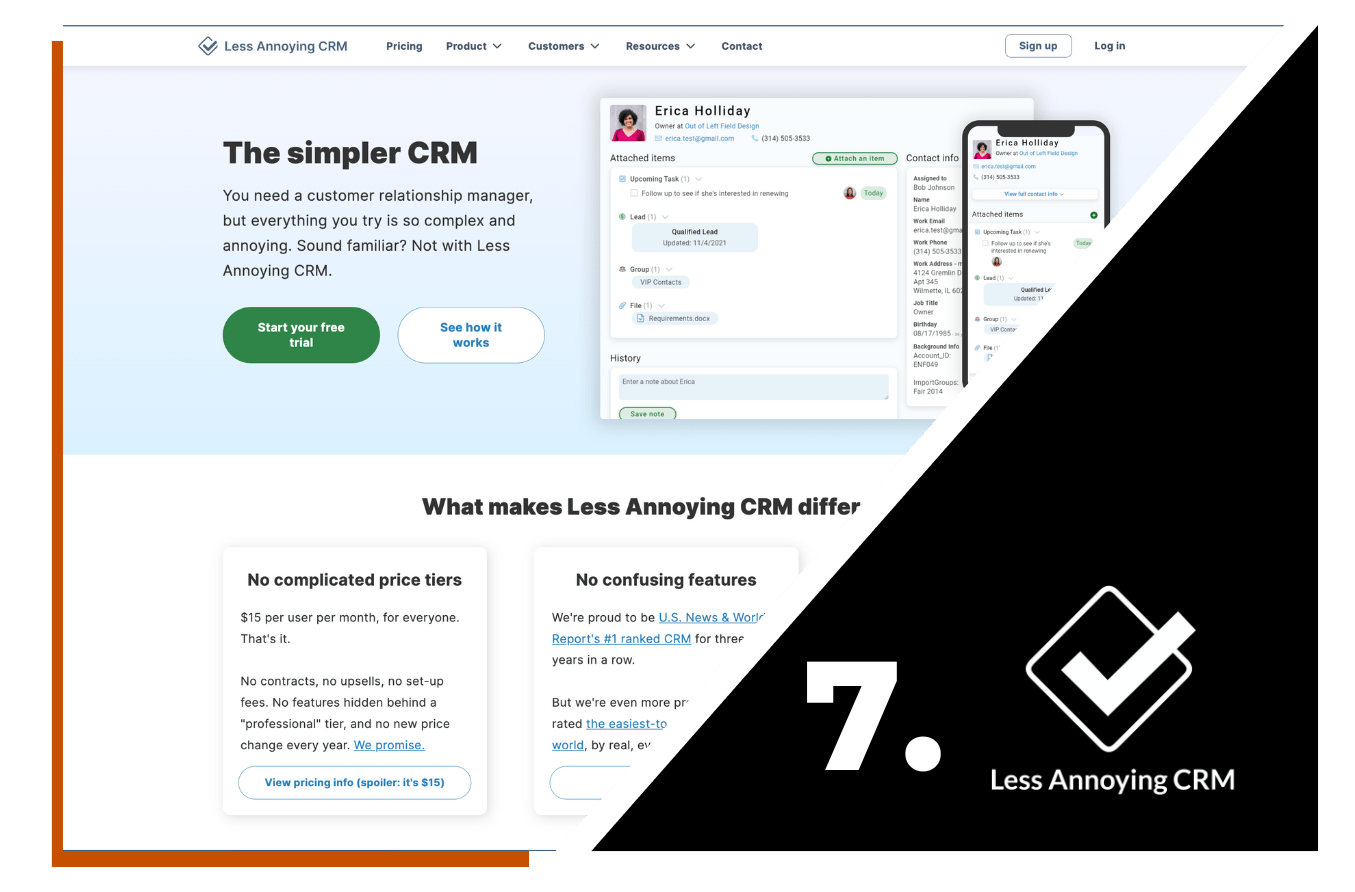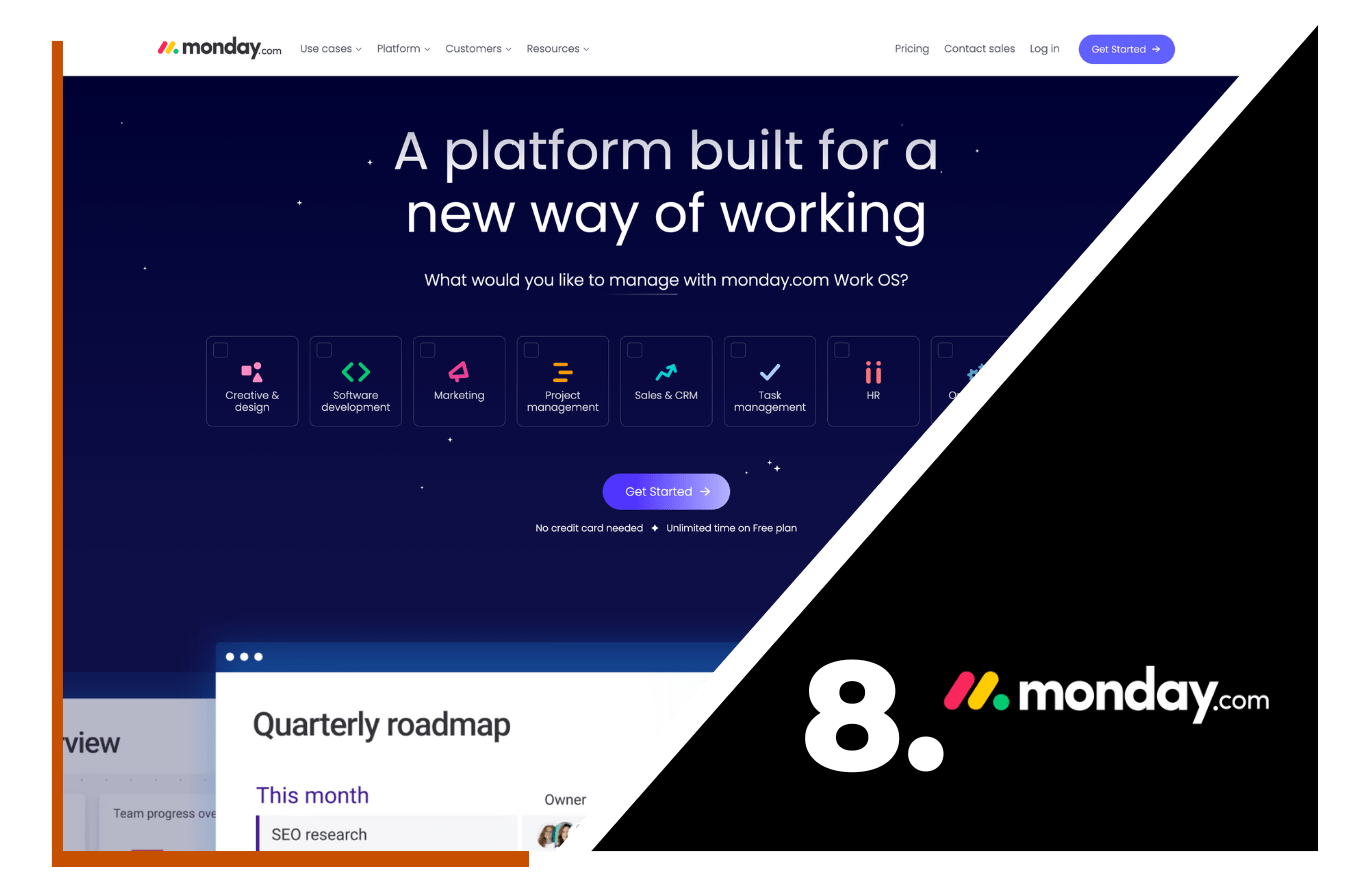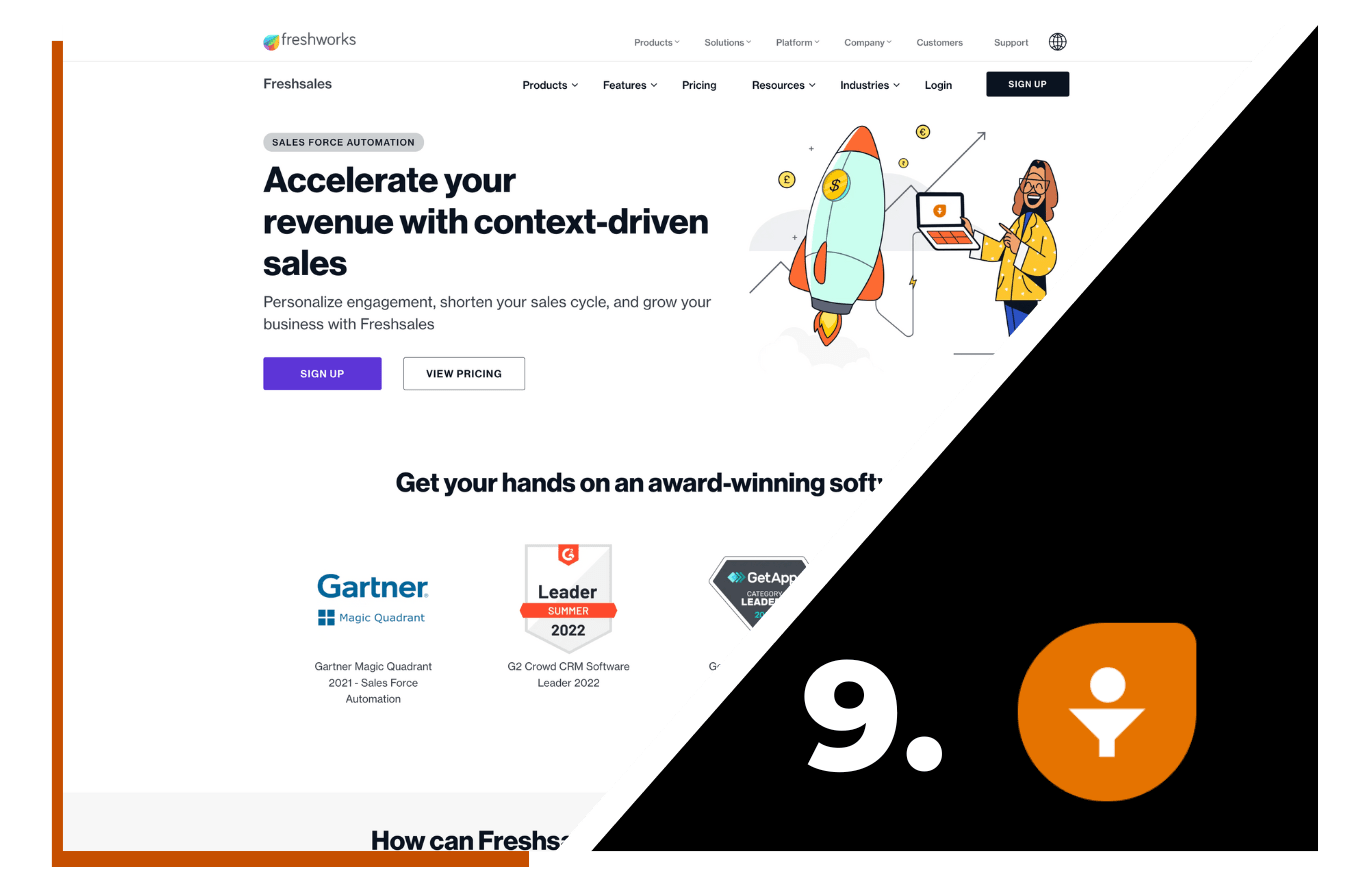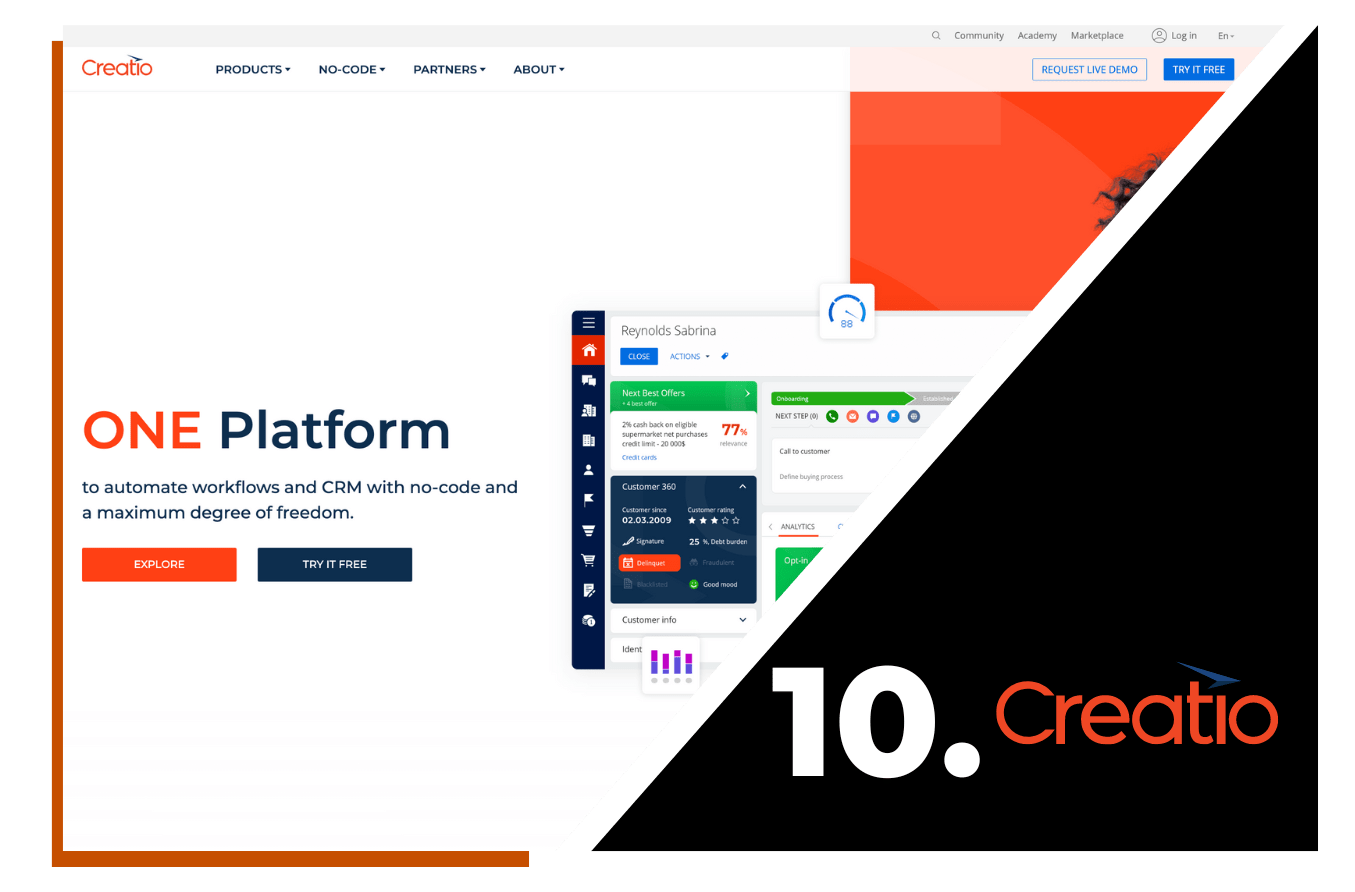What is Digital Engagement?
The Conservative Alternative to Facebook: Top 5 Platforms
- Community
- Content Strategy
- Guiding People
- and 2 more...

Americans live in a time of polarized politics – and that's easy to see on social media. Although the ability to express one's beliefs has begun to feel more like a right than a privilege, some feel their views are being censored, and have even begun seeking a conservative alternative to Facebook.
The Current Throne of Social Media
In many ways, a reaction to Facebook's dominance makes sense. Maybe it was even inevitable. According to parent company Meta, about 2 billion people use the platform every day, making it the leading social network overall and the biggest in the U.S., with over 63% of the population 13 or older using it. That's about 210 million Americans, and with its huge potential reach, Facebook has to regulate what gets posted – which has become a politically sensitive proposition.
What is the Role of a Social Media Company?
Most policies are intended to counteract disinformation and silence hate speech, which most Americans agree is important. But then the question becomes, "what is disinformation and hate speech?" As a result, many American conservatives believe Facebook has gone too far.
Posts by influential right-wing commentators have been flagged, and users have been suspended – or even de-platformed altogether – with some accusing Facebook of putting its thumb on the scale of democracy. Add in nagging privacy and security issues, and many have left Facebook, searching for something… different.
Lucky for them, a whole parallel social-media universe has sprung up.
Top 5 options when looking for a Conservative Alternative to Facebook.
1. Parler
This whole "conservative alternative to Facebook" thing didn't come from nowhere … it started with Parler. Purpose-built in 2018 and described as an "unbiased alternative to mainstream social networks," Parler first became widely popular in 2020, just as Facebook policies changed. It was then banned by Apple, Google, and Amazon stores, killing some of its momentum. But now it's back with stricter content controls and has about 15 million users, which tends to spike during election cycles.
- The "OG" of conservative platforms
- Focused on free sharing of non-mainstream news and opinion
- Users say its more restrictive than it lets on
2. Rumble
Rumble launched in Canada in 2013 and has now become a conservative favorite for video sharing à la YouTube. Users can share video content without restriction – and even monetize it, which Facebook doesn't allow. The platform experienced an influx of users after the 2020 election and now claims 80 million users, most of whom were referred from Parler after it was temporarily suspended.
- Unrestricted content sharing
- Large, politically active user base
- Can monetize your content
3. Gab
Next up is Gab, which launched in 2017 as just another social network, but has grown to become a home for the "outcasts" of the mainstream. A microblogging site similar to Twitter, many users arrive on Gab after being banned by other networks, drawn to the site's promotion of "free speech," "individual liberty," "free flow of information online," and Christian values. Detractors call it a haven for extremism, racism, conspiracy nuts, and antisemites, claiming it plays a role in growing radicalization.
- Can publish posts, chat, create private groups, read conservative news, and even shop
- Fierce devotion to "freedom of expression"
- A reputation that makes it attractive to extremists, hate speech
4. MeWe
MeWe is an exciting option in the conservative alternative to Facebook world. It's not explicitly described as "conservative" in any way, but does have a value proposition that aligns well with many conservative values. Billing itself as the "anti" Facebook, MeWe allows for posting, groups, and other social must-haves with no ads, no data targeting, no political bias,, and no news feed manipulation. It currently boasts about 20 million users.
- Posting, news, groups, personal chats, user tagging, and a two-way camera for video chats
- Hands off approach to user data
- Doesn't gather user info (or sell it to China)
5. Truth
Finally, we come to Truth Social. Launched in 2022 by former U.S. President Donald Trump, it is a direct response to the removal of certain conservative users from other platforms – including the former President himself. Purpose-built as an "uncensored" alternative to Twitter and Facebook, Truth aims to allow for free expression, and offers most of the familiar social media features you are used to, but has at times been accused of censorship itself. It's also small for now, with only about 2 million users, but it's the only place to be if you're looking to keep up with Trump.
- First and only social media platform started by a former president
- Created as a purpose-built conservative alternative to Facebook
- Can post Truths and share "ReTruth," as well as video content
If you want a conservative alternative to Facebook, these are just a few of the many options out there – and the field keeps growing all the time. Whether you're looking to bring your users into one platform where you own the data and monetization or just want a new social media environment. For users worried about their views being unfairly censored or silenced, it seems free speech is alive and well.
Get Started With Cause Machine
Starting with a community engagement strategy is the secret to building a successful platform in the long term. Cause Machine helps customers build the plan of engaging a community well and then begin mapping out the technology to help support that strategy. We’re certain that you’ll find some great resources and powerful tools in Cause Machine to better engage your community. Learn how it can work for you here.
5 Best Online Course Platforms to Grow Revenue
- Community
- Content Strategy
- Guiding People
- and 1 more...

Let’s start with a hypothetical. Say you’ve got some skills in an in-demand field—mad chops, like, so good it’s almost scary! Naturally, other people want them, too, and with the right online course platform, you can create and sell your own brilliant ideas.
That’s great! Since 2020 made virtual collaboration the norm, it’s easier than ever to share your knowledge with a global community… and get paid to do it. Your timing is perfect, but after a quick scan of the options, you’ve got a question.
How do I decide on the best online course platform for me?
To be honest, there are dozens of platforms out there, all serving a different need. Some are geared more toward creatives, while others offer amazing marketing tools. Some are endlessly customizable, while others use templates to get you up and running quick. Some let you control the data in your community. Your plan to spread knowledge (and monetize your mad skills) will have to wait, at least until you figure out where to host this game-changing course.
We’ve done the digging and picked out five gems from the heap—quite possibly the best online course platforms out there today. Then we broke them down so they’re easier to choose from, and the results are in.
5 online course platform options that serve a unique purpose.
1. Teachable
Teachable is widely considered one of the best online course platforms for beginners, since it has loads options to help first timers get started. You can build out simple courses with quick, pre-set template options and tips to get the most out of the program. And you also get access to student information, making marketing that much easier. But while it’s great for startups, you might want something more once you grow.
2. LearnDash
Next up is LearnDash, a learning platform that comes with one big advantage: It works with your existing WordPress website. That’s right, if you are one of the millions of people already hosting a website on WordPress, you can plug LearnDash right in. That does streamline things, but it also comes at a cost – you’ll need a bit of technical know-how to keep it running smoothly, in comparison to some other options.
3. Mighty Networks
Maybe the key to your success is a thriving, interactive community, one where you stay in constant contact with your members. Count Mighty Networks as a possible solution. You can use your existing social media following to build a network of potential students, and with live-streaming video uploads, your content will keep them engaged. When done right, your course could feel more like a social platform than school.
4. Skillshare
But what if the course you’re hoping to teach is in a creative field? Something like comic-book writing or… quilting… advanced finger painting? If that’s the case, you might want to check out Skillshare. With simple courses based on video lessons and projects to apply those lessons, it’s especially adept in creative fields. But, if the skill you’d like to share is more technical, you may need to look elsewhere.
5. Cause Machine
Enter Cause Machine, a purpose-built, all-in-one option. While other platforms can make it hard to centralize your digital footprint, Cause Machine is set up to do just that. Your website, podcast, events manager and online courses? They can all be in the same place. Members can interact with each other and take classes as a group, creating a more personal, engaged atmosphere, and whether your class is rooted in creative whimsy or hardcore data, you’re all set. Best of all, there’s no technical expertise required, and analytics are included, so it can grow as your business does. Check out some key features below:
-
Robust Event Management & Registration
-
Sell Online Video eCourses
-
Members-Only Original Content
-
Connect With Other Subscribers
-
Take Classes Together
In short, picking the best online course platform for you is an important decision, but it doesn’t have to be a chore.
Cause Machine Solutions
Here at Cause Machine, we help organizations solve complex community engagement problems/questions. We use these disciplines of innovation ourselves in our own development process and have helped lead many organizations through their own process of innovation discovery. Leveraging the Cause Machine platform for engaging your community helps you be confident that the foundations of this platform are built on time-tested best practices of great processes like innovation and design thinking. Schedule a FREE demo today!
CRM Software for Small Business - Top 10 Solutions (2024)
- Framework
- Marketing
- Measures + Reporting
- and 2 more...

Whether you’re just starting out or already a crafty veteran, the proper CRM software for small business is essential. CRM stands for Customer Relationship Management, and when implemented correctly, it can supercharge sales, drive exponential growth and let you provide incredible customer experiences.
Sounds too good to be true, right? Well, not necessarily.
With the right CRM software for small business, you can create a central hub of customer information that allows your team’s different departments to optimize their effort. CRMs can track sales, quickly organize analysis and encourage collaboration, getting everyone on the same page and putting all the elements of a successful business in one place.
In an increasingly data-driven world, this is a critical piece of the small-business puzzle, with the best options aiming for clarity – letting you spend less time cobbling insights together and more time engaging your community. But, the CRM landscape is large, and with so many options, getting started can feel daunting. Even deciding which type of CRM software is right for you may not be easy.
There are 3 types of CRM software for small business:
Collaborative – To help teams within your company work together more seamlessly.
Operational – Automated, tactical solutions that make your customer experience better.
Analytical – Providing insight into customer behavior, helping you steer toward greater results.
With those in mind, we’ve broken down the top 10 CRM software solutions for small businesses.
1. Salesforce
Salesforce is an all-in-one CRM with a sales focus, helping manage contacts, leads and more into an interactive dashboard. The result is a big-picture view of your business, and you can add features as you grow.
Key Features:
- Cloud-based platform with mobile app
- Scales with your business
- Lead management
2. Zoho CRM
Zoho CRM is a popular choice for small startups looking to keep expenses down, because its free plan allows up to three users. You can create sales workflows and keep track of customers, and switch to a paid version for more features.
Key Features:
- Free option for three users (Good for those just starting out)
- Add-on apps to integrate marketing, inventory and accounting (paid version only)
- Workflow automation
3. Zendesk Sell
For small businesses relying heavily on customer support, Zendesk Sell funnels all customer interactions into a single interface, tracking leads and keeping your team informed. It even allows calls to be recorded, helping your help desk be its best.
Key Features:
- High performance help desk features
- Call recording
- Sales triggers
4. Insightly
Insightly works best for small businesses with project-management needs. If you need to track a project from inception through implementation, delivery and review, this CRM can help keep things running efficiently.
Key Features:
- Chart-view tracking of project workflow
- Easily import date from other apps
- Mass Email Contacts with MailChimp Integration
5. Agile CRM
Like its name suggests, Agile is a CRM for small business which excels at being versatile – namely by adding top-notch marketing features. It’s ideal for shops where sales and marketing team members work closely together.
Key Features:
- Streamlined sales and contact tools
- Drag and drop marketing campaign builder
- Project management tools
6. Keap
Keap is another CRM which combines sales and marketing prowess, where leads can be organized, tracked and turned into sales. Plus, it offers expert instruction to get the most of the platform.
Key Features:
- Automated lead capture and organization
- Expert coaching and support
- Great email marketing features
7. Less Annoying CRM
Knowing that complexity is a small-business turn off, Less Annoying CRM is exactly what it claims to be. It lets you manage your contacts, calendar, and more without getting lost in the tech-feature weeds.
Key Features:
- Built for ease of use, less complexity.
- Straight forward, to-the-point feature set.
- Relationship management
8. monday.com
If you’ve got a fast-moving team who need to be in lockstep, monday.com could be your ideal CRM for small business. Those familiar with Kanban will find its visual organizer especially easy to use.
Key Features:
- Kanban-style organizer boards
- Free option with robust features
- Dynamic sales pipelines
9. Freshsales
For many small businesses, finding and developing leads is a key concern, and Freshsales is built to make that easier. Automatically capturing and tracking potential customers is the beginning of rising revenues.
Key Features:
- Built-in lead generation
- Advanced analytics
- Make calls & send emails
10. Creatio
Creatio can take a complicated, multi-step process and make it (relatively) simple, by automating the sales cycle, marketing approvals and more. And best of all, you don’t need to be a code wizard.
Key Features:
- “Process library” of pre-built workflows
- Intuitive customer record keeping
- Automated marketing campaigns
Remember, with the right CRM software for small business; you can take your customer experience to the next level – along with your sales, revenue, and more. As long as you're in a system that WORKS for your business!
So, which CRM solution is best for you?
Ask these 3 questions about your business needs:
1. What are we trying to achieve? (Manage Customer Relationships, Leads, Audience Segmentation)
2. What features are needed to achieve our goals? (Email sender, automation capabilities, etc.)
3. What is our budget?
When comparing platforms, look for those with numerous positive reviews and a good track record. If you're on a budget, shoot for the middle of the market. You'll find a reliable platform that may have some feature limitations. But, if you need a CRM as dynamic as a fighter jet, then there's a solution for your organization out there!
Cause Machine Solutions
One of the most significant pieces of what sets Cause Machine apart from other technology platforms is where we start… with a community engagement strategy. We begin all of our work on the foundation of engaging a community well and then begin mapping out the technology to help support that strategy. We’re certain that you’ll find some great resources and powerful tools in Cause Machine to better engage your community as well. Learn how it can work for you here.
Virtual Event Software That Creates Incredible Online Experiences
- Content Strategy
- Marketing
- Strategy
- and 3 more...

In the burgeoning landscape of digital interactions, virtual events have taken center stage, enabling organizations to connect, engage, and share knowledge with global audiences. The linchpin of successful online event orchestration often rests on the choice and effective utilization of virtual event software. This digital toolkit not only serves as the backbone of event organization but also as the conduit through which interactions flow, insights are gleaned, and value is delivered to attendees. This guide navigates through the crucial aspects of selecting, deploying, and optimizing virtual event software to ensure your online events resonate with professionalism, engagement, and seamless user experience.
Whether you are hosting webinars, virtual conferences, or hybrid events, the right software can significantly enhance the interaction quotient, analytical depth, and overall success of your virtual endeavors. In the ensuing sections, we will explore the criteria for software selection, delve into the spectrum of features offered, and illustrate how to design for optimum attendee engagement, among other key considerations.
As we traverse through the realms of virtual event software, may this guide serve as your compass in making informed decisions and elevating your virtual event experiences
Ready to Plan Your Next Virtual Experience?
Embark on a journey of Virtual Events with us! Dive deeper into our resources, join our upcoming community, or get in touch for personalized guidance.
Explore More7 Strategies to Leverage Virtual Event Software
1. Selecting the Right Virtual Event Software
The cornerstone of orchestrating a successful virtual event lies in selecting the right software that aligns with your objectives, audience size, and the technical capabilities of your team. The plethora of virtual event software available in the market today ranges from simple webinar platforms to comprehensive virtual event suites. As you embark on the journey of selection, a clear understanding of your event goals is paramount. Is your event focused on education, networking, product launches, or perhaps a blend of these? Next, consider the scale of your event - will you be hosting a few dozen attendees or several thousand?
The technical savviness of your team and attendees, the level of support and training provided by the software vendor, and the budget are other critical factors to consider. Delve into the features offered - does the software provide essential functionalities like registration management, real-time interaction features, analytics, and integration capabilities with other tools you use? Evaluating the software on the basis of user reviews, case studies, and preferably a hands-on demo will provide insights into its usability and effectiveness. Also, consider the software's scalability and flexibility to accommodate your evolving needs. Lastly, ensure the software complies with data privacy laws and security standards to safeguard your and your attendees’ data. Each of these factors plays a pivotal role in steering your decision toward a software solution that not only meets your immediate needs but sets the stage for successful virtual events in the long run.
Other considerations include:
- Automation to reduce time and costs
- Customization to reflect your branding
- Event management features
- Registration specifically how they register
- Marketing steps taken before the event launches
- Promotions
2. Feature Spectrum: Core Features of Virtual Event Software:
Embarking on the journey of hosting a virtual event necessitates a robust software platform equipped with a spectrum of features to facilitate a seamless and engaging attendee experience. The core features of virtual event software encompass a variety of functionalities tailored to meet the evolving demands of virtual interactions. Here are some of the essential features highlighted by industry experts:
-
Automation: Streamlining processes such as creating event pages and managing registrations through automation significantly reduces the time and costs associated with hosting virtual and hybrid events.
-
Event Management: Comprehensive event management features facilitate the entire lifecycle of an event, ensuring smooth transactions from registrations, and ticket access to real-time attendee engagement.
-
Streamlining Various Aspects: Investing in virtual event software like Eventtia can streamline various aspects of your event, ranging from team management, managing event registrations, and check-ins to sponsorships, and more.
-
Webcasting and Interactive Digital Experience: At the core, virtual event platforms enable hosting and webcasting of events to an online audience, providing a stimulating and interactive digital experience. Key features to plan, promote, and host a virtual event include webcasting, live interaction capabilities, and analytical insights.
For a deeper dive into the core features of virtual event software, consider exploring articles like 12 Must Have Key Features In A Virtual Event Platform which provides a comprehensive overview of essential functionalities.
3. User Experience: Designing for Attendee Engagement
The user experience (UX) in virtual events is paramount in ensuring attendee engagement and satisfaction. A well-designed interface that is intuitive and easy to navigate enhances the overall attendee experience. Features such as clear agendas, easy access to sessions, interactive Q&A, and chat forums contribute to a rich UX. Additionally, providing resources and support for attendees to troubleshoot technical issues swiftly is crucial. Tailoring the UX to mirror the objectives of the event while considering the expectations of the attendees can significantly elevate the engagement level and overall success of the virtual event.
4. Technical Support and Troubleshooting
Technical glitches are almost inevitable in virtual events; hence, having a robust support and troubleshooting system is essential. Offering a helpdesk or support chat during the event, having a clear FAQ section, and providing self-service resources can mitigate potential technical issues. Moreover, having a technical team ready to address issues in real time is vital to ensure the smooth running of the event. It's beneficial to choose a virtual event software that provides comprehensive technical support to handle any unforeseen challenges promptly.
5. Analytical Insights: Measuring Event Success
Analytical insights gleaned from virtual event software can be a goldmine of information to measure the success and ROI of your event. Metrics such as attendee engagement, number of attendees, session attendance, and feedback are pivotal in understanding the impact of your event. Analyzing these metrics post-event can provide valuable insights into areas of improvement and strategies for future events. Moreover, real-time analytics during the event can help in making quick adjustments to enhance attendee engagement and satisfaction. Check out the "7 Indicators to Measure the Success of Your Event" for more on the subject.
6. Integration Capabilities: Bridging Software Synergies
Integration capabilities of virtual event software with other organizational tools and platforms enhance efficiency and data management. Being able to integrate with CRM systems, marketing automation platforms, and other software used within your organization allows for a seamless flow of data and improved operational efficiency. It also facilitates better attendee data management and personalized engagement strategies. Ensure the virtual event software chosen has robust integration capabilities to maximize its utility and enhance the overall event management process.
7. Case Studies: Success Stories and Lessons Learned
Case studies of successful virtual events and the software utilized provide a practical lens through which to understand the capabilities and potential of virtual event software. They offer real-world insights into how organizations have leveraged software features to enhance attendee engagement, streamline operations, and measure event success. Delving into case studies also unveils challenges faced and how they were overcome, providing a rich resource of lessons learned and best practices for hosting successful virtual events.
The digital realm offers a vast stage for organizations to connect with audiences, promote causes, and foster community. Mastering online virtual events and marketing in this domain necessitates a blend of strategic planning, engaging content, and adept utilization of various digital channels. The tips provided herein serve as a navigational compass, guiding you through the essentials of orchestrating successful virtual events and marketing campaigns. With a firm grasp of these principles and an eye on evolving digital trends, you are well on your path to creating resonant and impactful online experiences. As you venture forth in the digital event landscape, may every virtual stage you step onto resonate with the chords of engagement, innovation, and success.
Virtual Event Marketing: 8 Key Tips for Navigating the Digital Stage

The dawn of the digital era has ushered in an array of opportunities for organizations to connect with their audiences, stakeholders, and communities in virtual spaces. Online virtual events and marketing have emerged as powerful tools to transcend geographical boundaries and create engaging experiences that resonate with diverse audiences. However, mastering the art of virtual events and digital marketing entails a blend of strategic planning, creative execution, and adept utilization of technological platforms. This guide unveils eight key tips to navigate the digital stage and orchestrate successful online virtual events and marketing campaigns.
Whether you are a seasoned digital maestro or venturing into the virtual realm for the first time, these insights will equip you with the essential knowledge to create, promote, and analyze virtual events that captivate audiences and amplify your message in the digital domain. The subsequent sections delve into a curated ensemble of strategies, each playing a crucial role in harmonizing your online event and marketing symphony. So, without further ado, let’s embark on this digital odyssey to master the art of online virtual events and marketing.
Ready to Plan Your Next Virtual Experience?
Embark on a journey of Virtual Events with us! Dive deeper into our resources, join our upcoming community, or get in touch for personalized guidance.
Explore More
Three-Stage Planning
Consider the event planning process in three stages: Pre-event, during the event, and post-event. The Pre-event stage is the cornerstone where meticulous planning takes place. It includes content creation which could range from blog posts, and videos to social media snippets, and email marketing to build anticipation and awareness among prospective attendees.
The During event stage is where the real action happens. It's crucial to focus on attendee engagement through interactive sessions, Q&A, and robust live-streaming production to ensure a smooth and enjoyable experience for the attendees. The Post-event stage is about capitalizing on the momentum generated during the event. This stage includes sending out follow-up emails to attendees, collecting feedback for insights on areas of improvement, and thorough analysis to measure the success and ROI of the event. Each stage, with its unique focus, contributes to the overarching success and impact of the virtual event.
Brand Your Event
Branding is the magic wand that can set your virtual event apart in a sea of online interactions. A well-branded event resonates with the audience and leaves a lasting impression. It's essential to create a multi-faceted marketing plan encompassing a dedicated website or landing page, social media campaigns, email marketing, partnerships, and paid media to create a buzz. An eye-catching, easy-to-navigate website or landing page for your event, a save-the-date email, a well-orchestrated social media plan, and an advance announcement of your agenda or event programming are crucial steps in building the brand of your virtual event. Each branding element should echo the core message and values of the event, creating a cohesive and memorable brand experience.
Social Media Campaigns
Utilize social media to keep your event top of mind. Social media is a powerhouse for keeping your event top of mind among your target audience. A well-strategized social media campaign could include posting 3-4 ads per week, owning a unique hashtag (consider running a contest around it to boost engagement), using keywords in captions to create buzz, and maintaining a consistent yet dynamic design across your campaigns.
Employing A/B testing can provide valuable insights into what resonates with your audience, allowing for informed decisions to enhance the effectiveness of future campaigns. Each social media post is a ripple in the digital pond, potentially creating waves of engagement and anticipation for your event.
The 5 Ps of Event Planning
Adhere to the guiding principles of event planning: Plan, People, Process, Performance, and Post-Event. These principles remain vital whether you're marketing live or virtual events. Your event marketing plan is the blueprint of what you want to achieve. Your event marketing plan is the blueprint, detailing the objectives, target audience, marketing strategies, and metrics for success.
People are the heart of your event—understanding your audience and having a dedicated team to execute the plan is crucial. The Process involves the steps and technology required to bring your event to life. Performance is about ensuring the event runs smoothly and meets its objectives. The Post-Event phase is your window to analyze the event’s success, gather feedback, and plan for future events. Adhering to these guiding principles is pivotal in orchestrating successful live or virtual events.
Audience Engagement
Audience engagement is the lifeblood of a successful virtual event. It's imperative to have plans to keep your audience engaged throughout the event. According to a study by Markletic, 49% of marketers believe that audience engagement is the most significant factor for a successful event. Creating interactive sessions, Q&A segments, and providing networking opportunities are some strategies to foster engagement. The essence of engagement lies in creating a two-way dialogue, making attendees feel valued and a part of the event rather than mere spectators. It could also include follow-up with common email marketing tools.
Interactive Elements
Interactive elements are the spices in the recipe for a successful virtual event. Incorporating features like polls, quizzes, Q&A sessions, and networking opportunities not only keeps the audience engaged but also adds value to their experience. These elements foster a sense of community, stimulate discussions, and provide a platform for attendees to share insights and connect with each other and the hosts.
Ensuring your virtual event software supports these interactive features is crucial to delivering an engaging and memorable event experience
Promotion Across Channels
Promote your virtual event across multiple channels including email, social media, your website, and through partnerships to reach a wider audience and create buzz. Promoting your virtual event across multiple channels is akin to casting a wide net to reach a broader audience. Employing a mix of email marketing, social media promotion, website banners, and partnerships can create a buzz around your event.
Tailoring your promotional messages to resonate with the specific audience on each channel and creating shareable content can amplify the reach and anticipation for your event. A well-rounded promotion strategy ensures your event garners the attention and attendance it deserves, setting the stage for a successful virtual gathering.
Post-Event Analysis
The post-event analysis is your compass to navigate the success and areas of improvement for your virtual event. Collecting feedback from attendees provides firsthand insights into what worked well and what didn’t. Reviewing analytics such as attendee numbers, engagement rates, and session attendance provides a quantitative measure of success. Identifying areas for improvement and documenting lessons learned are invaluable for refining your strategies for future events. The post-event analysis phase is an opportunity for reflection, learning, and planning.
The digital realm offers a vast stage for organizations to connect with audiences, promote causes, and foster community. Mastering online virtual events and marketing in this domain necessitates a blend of strategic planning, engaging content, and adept utilization of various digital channels. The tips provided herein serve as a navigational compass, guiding you through the essentials of orchestrating successful virtual events and marketing campaigns. With a firm grasp of these principles and an eye on evolving digital trends, you are well on your path to creating resonant and impactful online experiences. As you venture forth in the digital event landscape, may every virtual stage you step onto resonate with the chords of engagement, innovation, and success.


